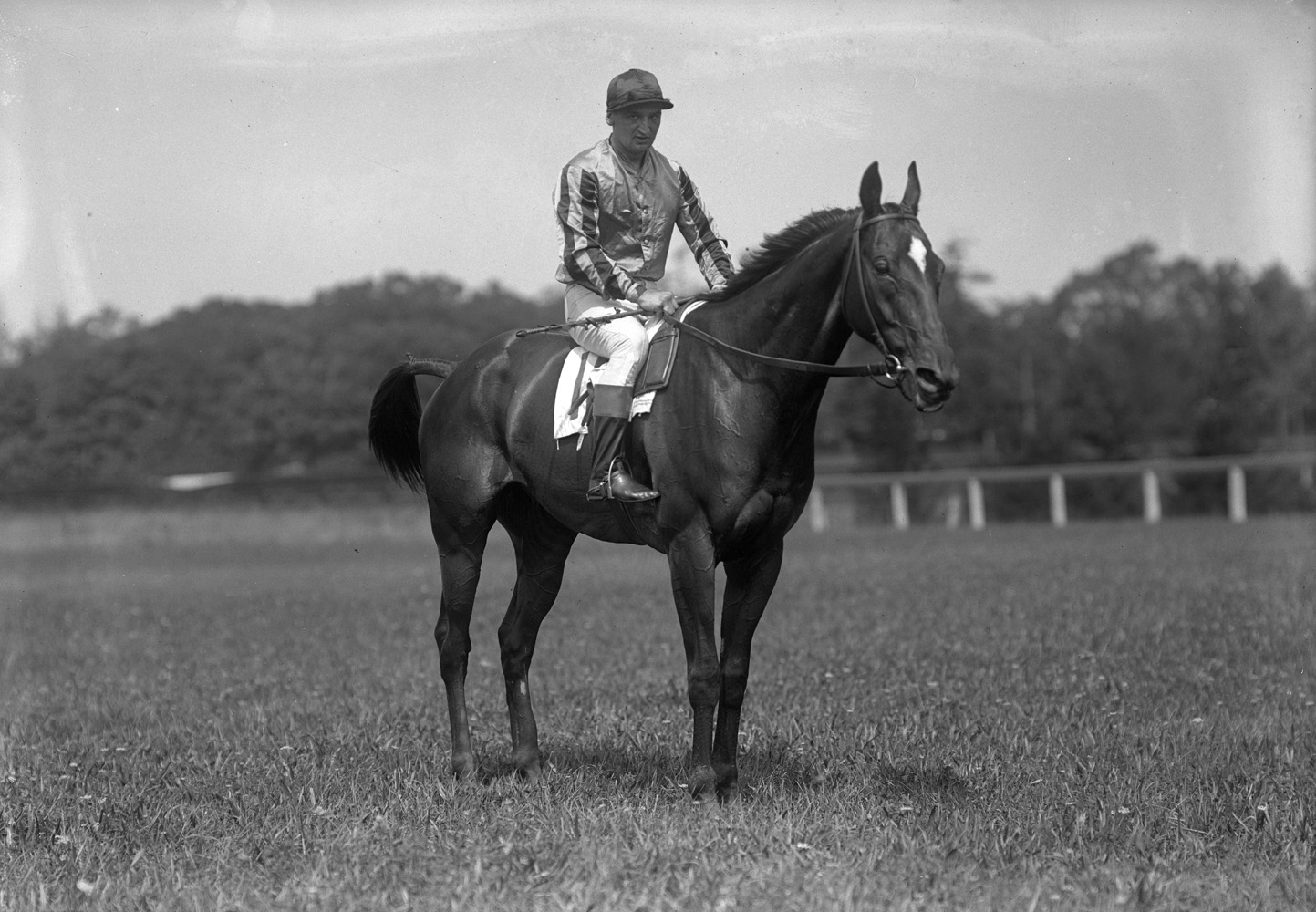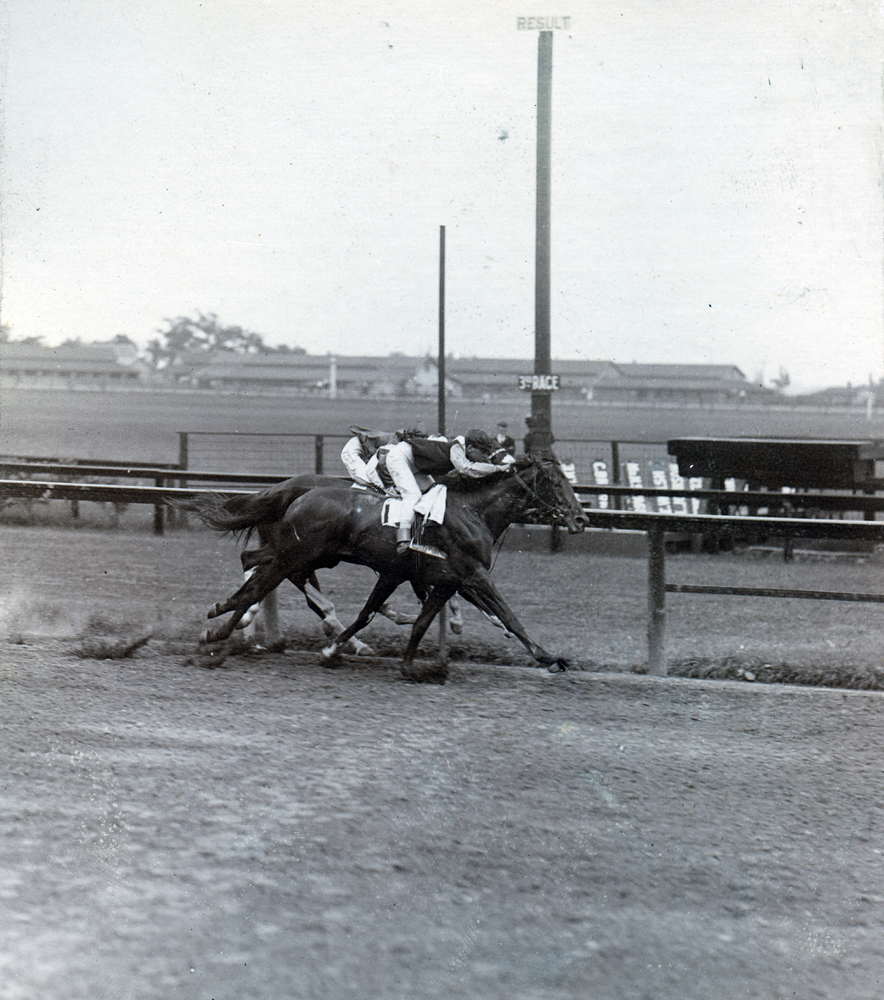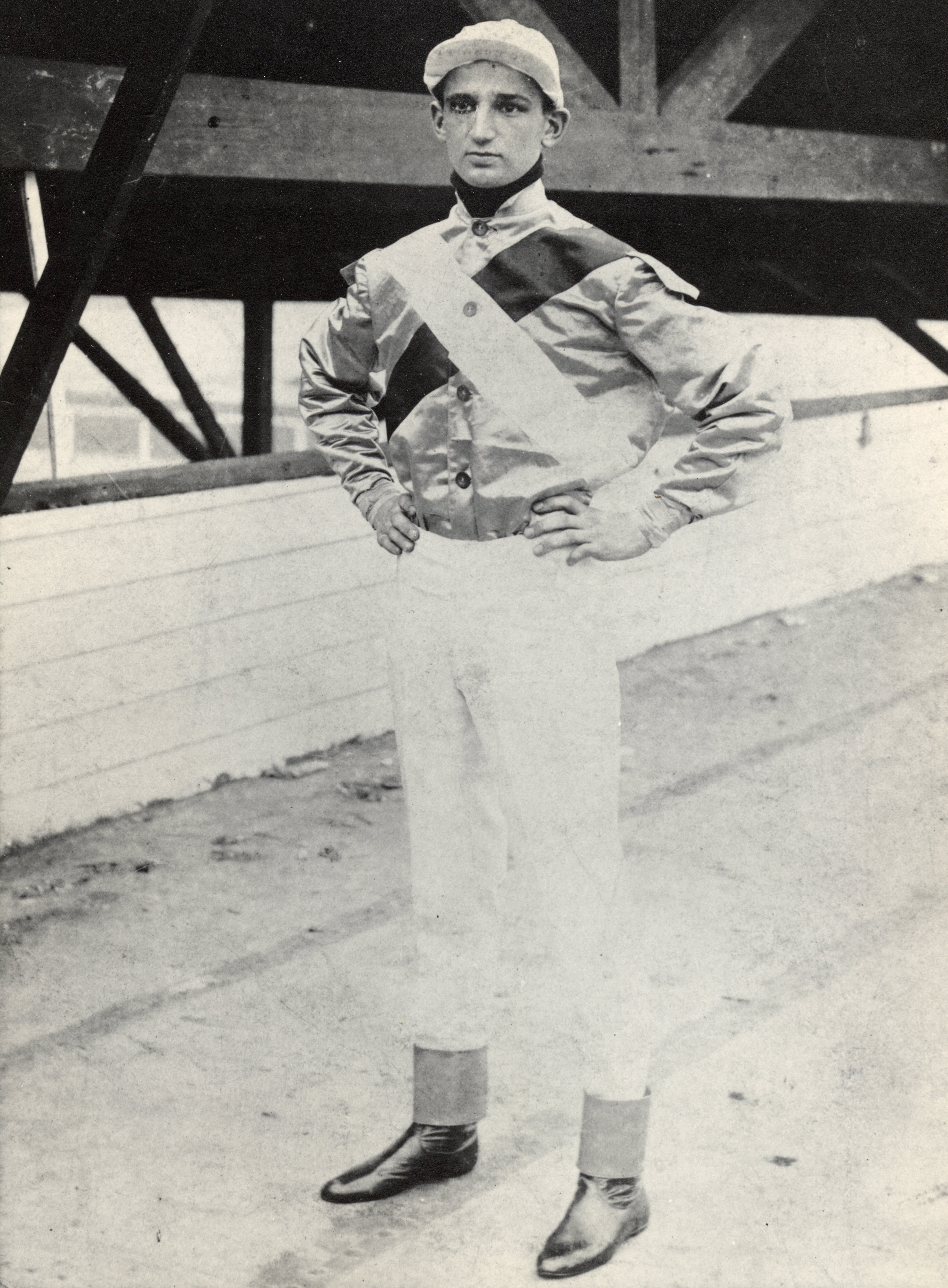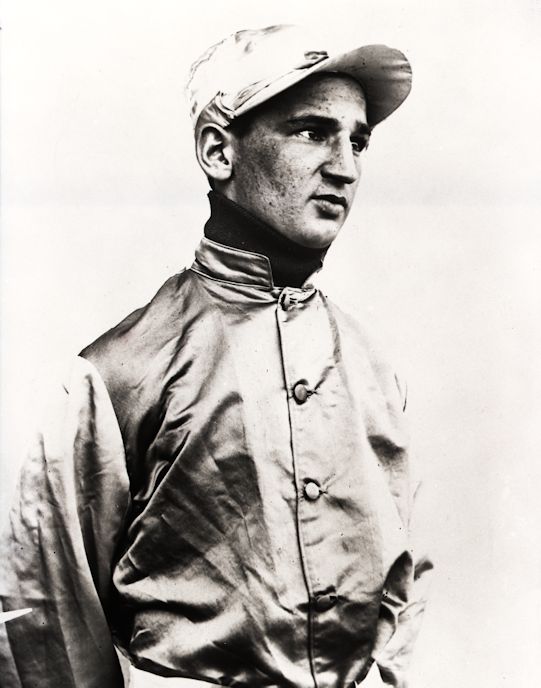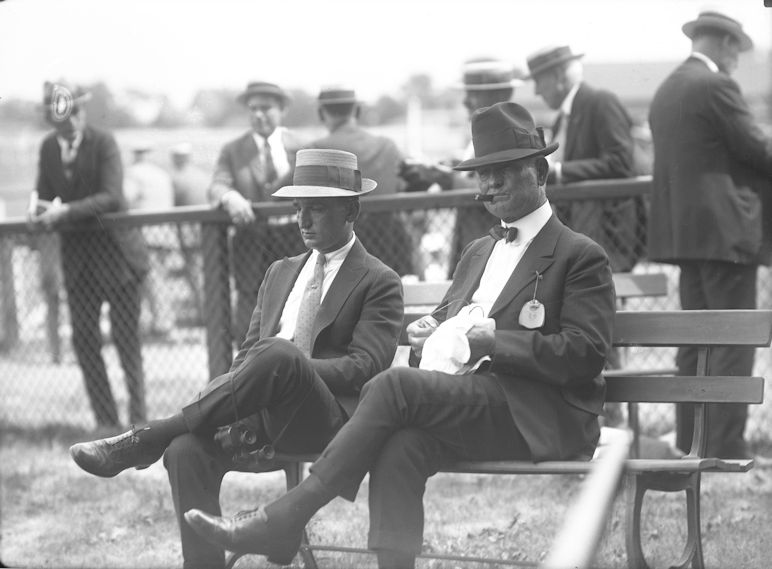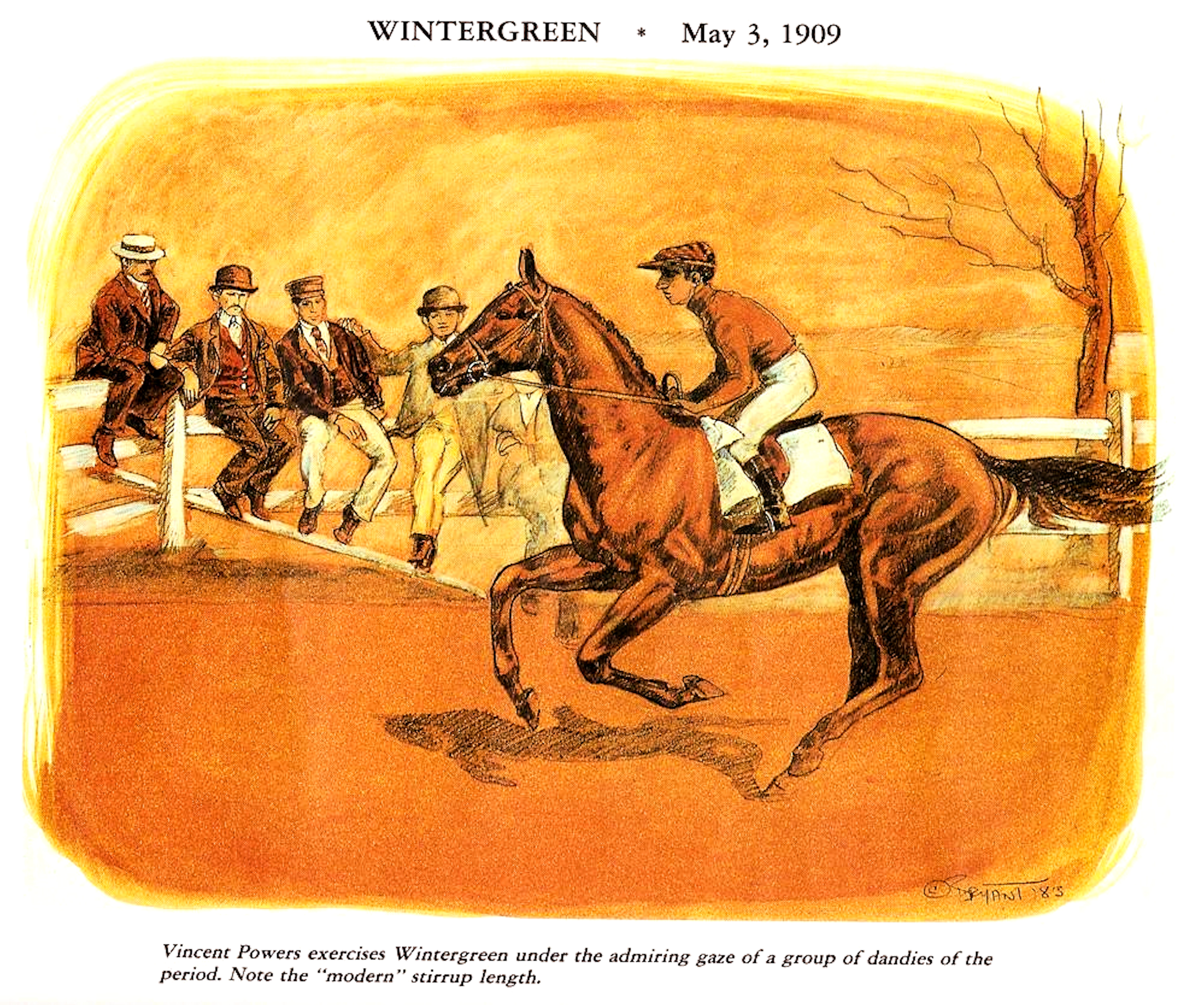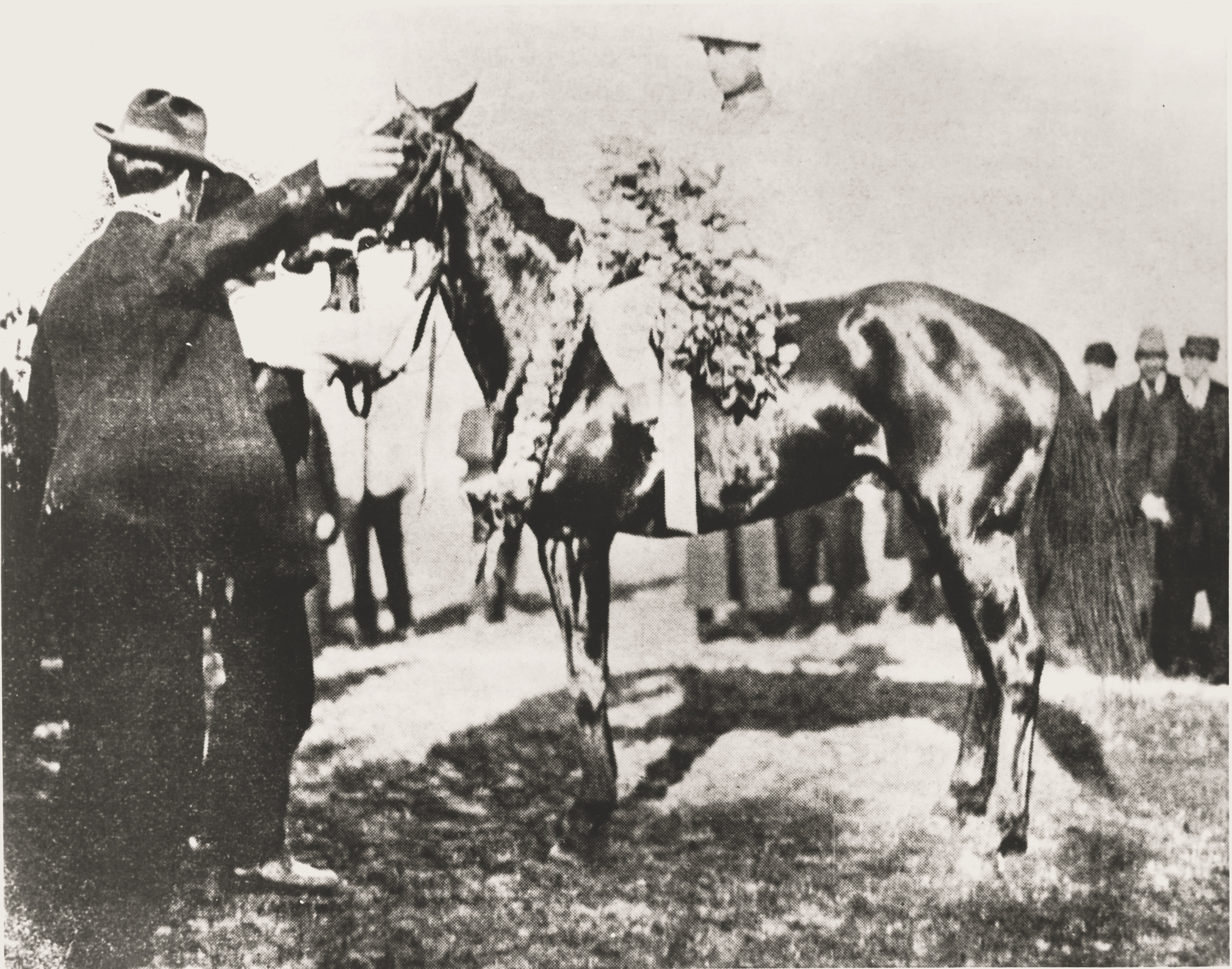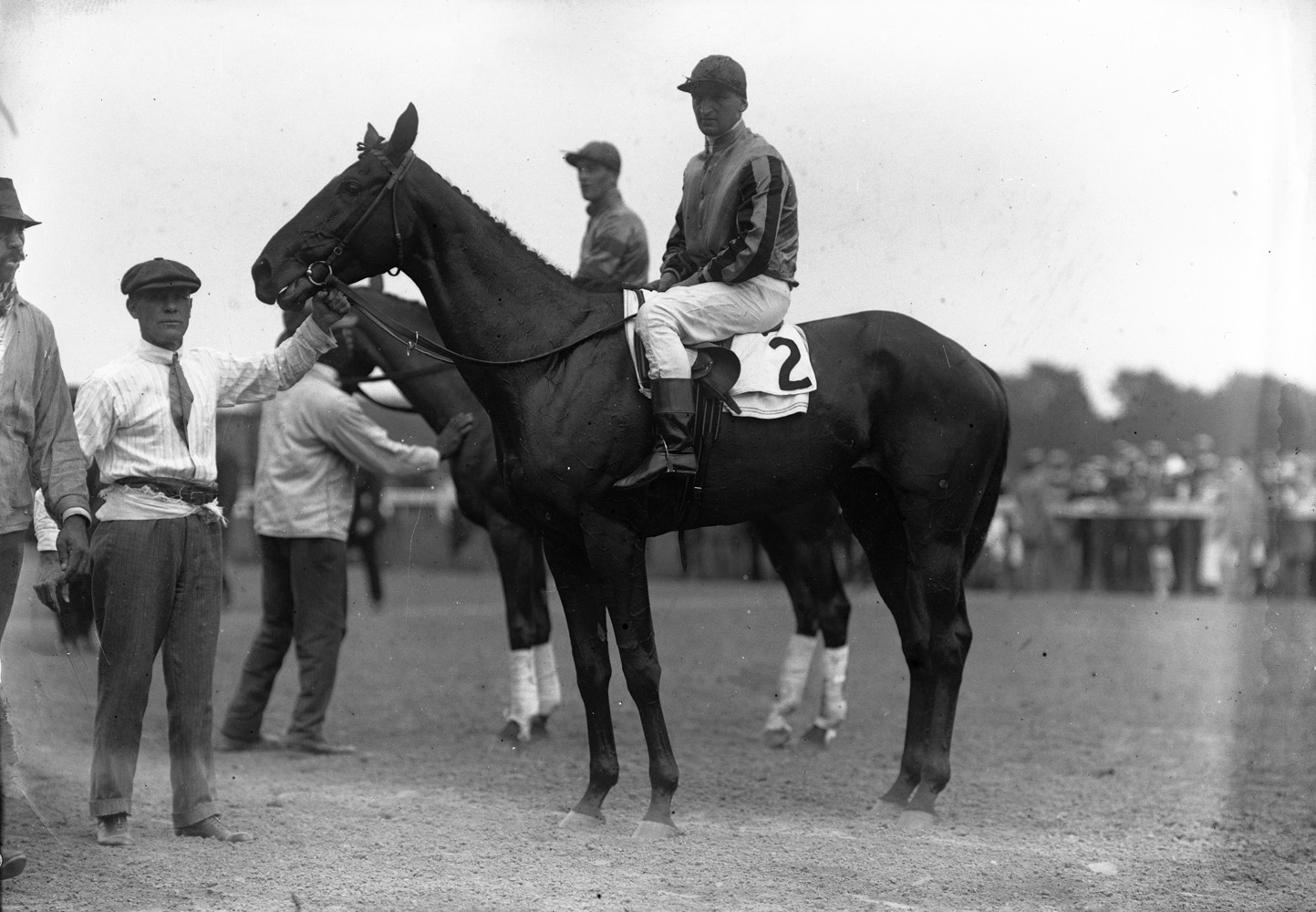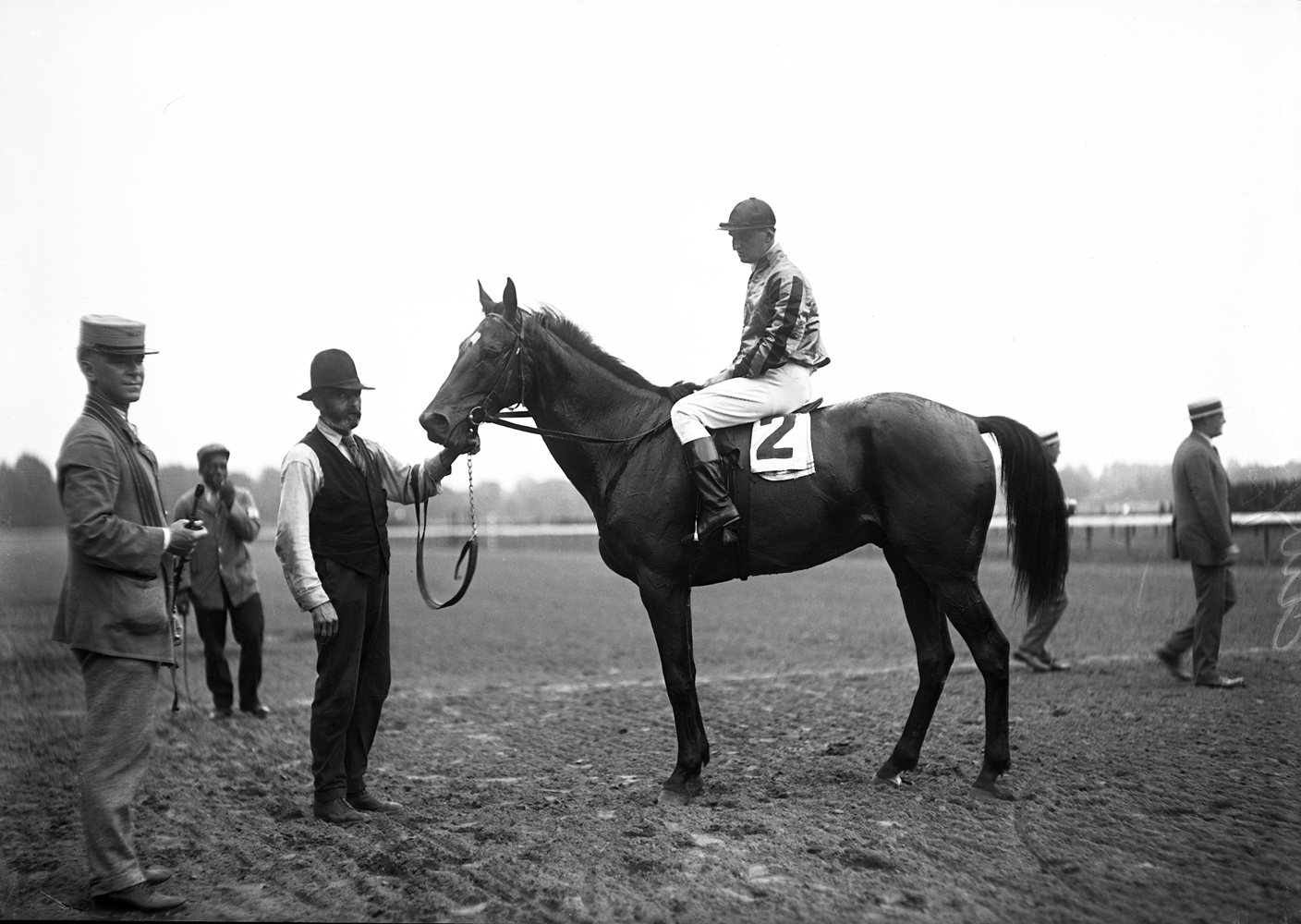Vincent Powers
Vincent Powers enjoyed a fascinating, prosperous, and most unconventional career in the sport of thoroughbred racing.
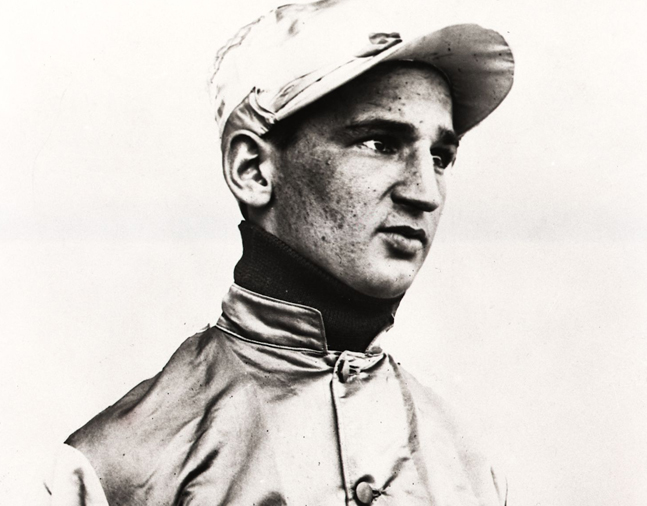
2015
June 6, 1891, Westfield, New York
Oct. 19, 1966, New York City, New York
1907-1923
654 (flat wins in North America)
Racing Record
22.2
Win %
Biography
Vincent Powers enjoyed a fascinating, prosperous, and most unconventional career in the sport of thoroughbred racing.
Born in Westfield, New York, in 1891, Powers achieved tremendous success as both a jockey and trainer and has the unique distinction of being the only rider to ever lead the North American standings as both a flat and steeplechase competitor. He later added to his eclectic résumé when he became the leading steeplechase trainer in North America and conditioned one of the greatest jumpers in racing history, Jolly Roger.
Powers began riding in his early teens on the half-mile tracks of the Canadian circuit’s lower levels. He won his first race at a recognized track as a 15-year-old aboard Brimmer for a purse of $500 on May 31, 1907, at Churchill Downs. It was a meteoric rise to the top from there.
The following year, Powers became the leading jockey in North America with 324 victories, winning 25.7 percent of his races. He again topped the national standings with 173 wins (24.5 percent) in 1909 even though he missed considerable time because of a suspension for rough riding. It was not until 15 years later that another jockey led the North American standings in consecutive years (Ivan Parke, 1923 and 1924).
While riding in California in January 1909, the San Francisco Call newspaper said of Powers: “The great factor in his success has been his reliability and consistency, coupled with his remarkable gift of horsemanship. Powers has the faculty, possessed in a high degree also by Tod Sloan, though his is a much more admirable character than Sloan’s, of getting more out of his mounts than others could. Over and over again he demonstrated that under his skillful handling horses would run faster and stay farther than for any other boy.”
Powers won several significant races in 1908, including the Clark Handicap on Polly Prim, the Kentucky Oaks with Ellen-a-Dale, and the Latonia Oaks aboard Chulita. He won many more prestigious races in 1909, including the Kentucky Derby with Wintergreen. Winning the Derby with Wintergreen, an Ohio-bred who never won another stakes race before or after, attracted the attention of Hall of Fame trainer Sam Hildreth, who put Powers aboard his standout Fitz Herbert, the 1909 retrospective Horse of the Year. Powers was aboard Fitz Herbert when he set a world record of 2:45 flat in the 1⅝-mile Lawrence Realization at Sheepshead Bay. Other victories for Powers with Fitz Herbert that year included the Coney Island Jockey Club Stakes, and the Advance Stakes. Powers also won the Great Trial, Double Event, and Surf stakes with standout 2-year-old Dalmatian; the Foam Stakes with Kingship; and the Hopeful and San Gabriel stakes with Rocky O’Brien. Powers continued to thrive in 1910, winning 107 races (20.9 percent), including the Saratoga Cup aboard Countess; the Delaware Handicap with Sir John Johnson; the Fashion Stakes and Breeders’ Futurity with Housemaid; and the Carlton Stakes with Sweep.
By the end of 1910, Powers was one of America’s most accomplished riders, but at the age of 18 his life was about to drastically change. Racing in New York shut down at the end of the year as scandals and the rise of Victorian morality led the end of legal gambling and the shuttering of the state’s tracks until 1913. While there was still racing in Kentucky and Canada, the quality and purses were diminished. Those factors convinced Powers to relocate to Europe, where he rode first call in France and Germany for Hildreth for a guaranteed salary of $10,000. Powers concluded his four-year North American career as a flat jockey with 654 victories from 2,936 mounts for a 22.2 win percentage.
Powers spent three-plus successful years abroad, but increasing weight necessitated him to try his hand at riding jumpers in 1913. It was a natural transition for Powers. He was second in the French steeplechase standings behind the great William Head in 1914 when World War I broke out in Europe. The Germans had overrun Belgium and were moving toward Paris in late summer when racing was abandoned throughout the continent. Powers returned to United States, bringing with him his German-born wife, Hedwig.
Upon his return to America, Powers built a relationship with Greentree Stables and its steeplechase trainer, Jimmy Owens. Powers was contracted to be Greentree’s primary steeplechase rider and held the position through 1922. He became the top North American steeplechase jockey in 1917 when he won on 15 of 39 mounts (38.4 percent).
During his time as a steeplechase rider, Powers won the Grand National in 1919 and 1920; the Brook in 1918 and 1922; the Bayside in 1919, 1920, and 1923; the Broadhollow in 1916, 1918, and 1920; the Meadowbrook in 1918, 1919, 1920, and 1922; the North American in 1920 and 1922; and single editions of the Bushwick (1920), Corinthian (1918), Elkridge (1919), International (1920), Queensboro (1918), Saratoga (1916), Shillelah (1917), and Winfield (1922) steeplechases, among others.
In 1922, Powers took over as Greentree’s head steeplechase trainer when Owens died, while also continuing to ride on occasion. He saddled his first winner as a trainer, Irish Seas, in a flat race May 10, 1922 at Jamaica Race Course. Powers won his first jump race as a trainer June 8, 1922 with 7-year-old Kingdom II at Belmont Park in the Meadowbrook Steeplechase. Powers also rode Kingdom II that day, winning the race as a rider for the fourth time.
Powers was the leading steeplechase trainer in North America in 1927 when he saddled 19 winners and set a record with $103,889 in purse earnings. The great Jolly Roger was the big horse in the barn for Powers, earning $63,075 that year with six victories, including the Grand National, Brook, Bayside, Corinthian, and Appleton Memorial steeplechases. Jolly Roger repeated his victories in the Grand National and Corinthian in 1928 and went on to become the first steeplechaser to surpass $100,000 in career earnings. He was inducted into the Hall of Fame in 1965.
Other good steeplechasers trained by Powers included 1937 champion Jungle King, as well as Fairfield, Brantome, Sailor Beware, and Galsac. As a trainer, Powers won the North American Steeplechase five times (1929, 1930, 1933, 1936, 1937), the Grand National four times (1926, 1927, 1928, 1937), the Saratoga Steeplechase three times (1926, 1935, 1937), the Appleton Memorial three times (1927, 1929, 1939), and both the Temple Gwathmey (1936, 1937) and Shilellah Steeplechase twice (1926, 1929).
Powers retired from training in 1946. He died Oct. 19, 1966 in New York City at the age of 74.
Achievements
North America's leading rider in wins — 1908, 1909
North America's leading rider in steeplechase wins — 1917
North America's leading steeplechase trainer in earnings — 1927
North America's leading steeplechase trainer in wins — 1927
Triple Crown Highlights
Won the 1909 Kentucky Derby — Wintergreen
Media
